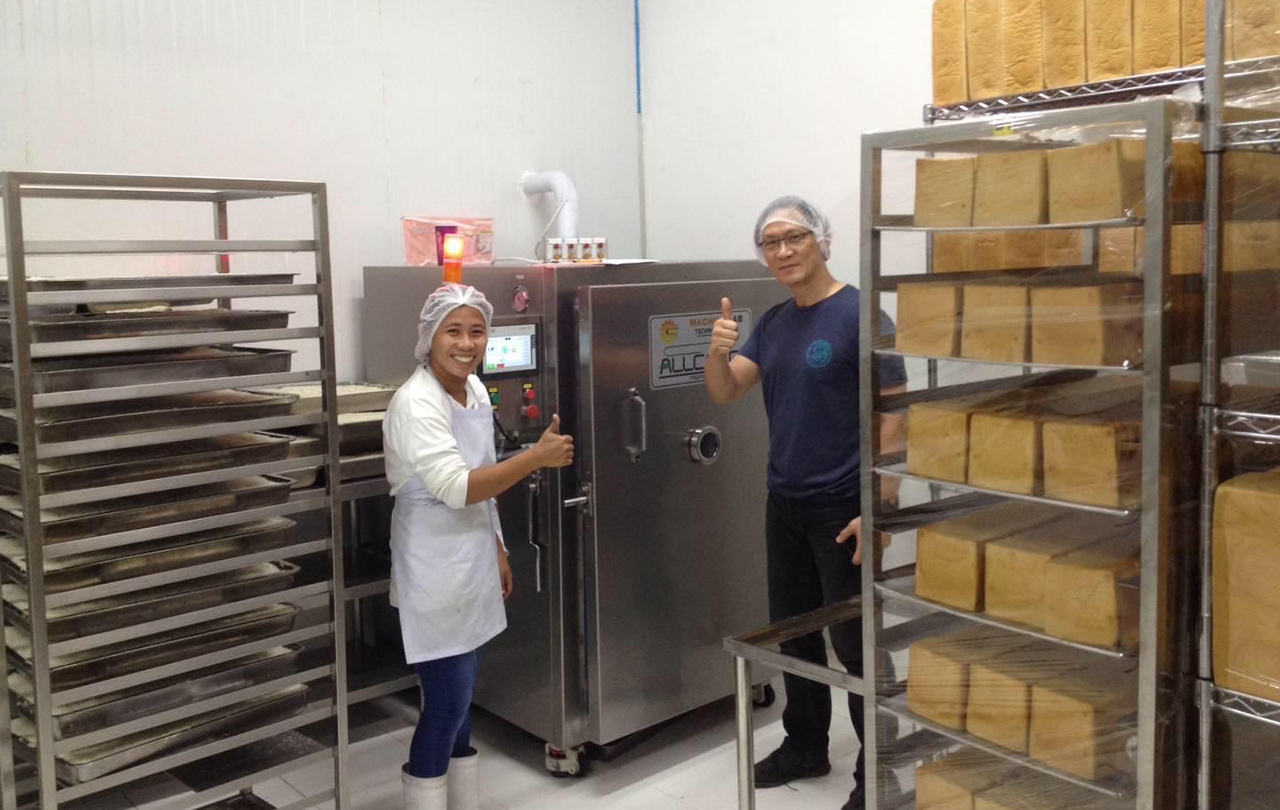Origin
Implementing vacuum cooling in the baking industry has emerged in response to bakeries’ need for reducing the time from the ingredients scaling step through product packing.
What is Vacuum Cooling?
Vacuum cooling is a rapid and more efficient alternative to traditional atmospheric or ambient cooling. It is a relatively new technology based on reducing the difference between ambient atmospheric pressure and water vapor pressure in a product.
By using a pump, the vacuum cooling system removes dry and humid air from the cooling environment to create vacuum.
This accelerates the vaporization of free moisture from the product.
High speed bakeries benefit from this technology via reducing cycle times and efficient usage of production plant floor space.

How it works
In this process, loaves coming out of the oven at temperatures close to 205°F (96°C) are placed or conveyed directly into a vacuum chamber. It’s sized based on processing requirements, pieces per minute produced, and floor usage. Once the product is loaded, the vacuum chamber is then sealed to prevent gas exchange.
A vacuum pump starts working by removing air from the cooling chamber, hence decreasing the air (atmospheric) pressure in the chamber. The vacuum created inside the equipment (partial or total) lowers the boiling point of water in the product. Subsequently, the moisture present in the product starts to evaporate quickly and steadily. The boiling process requires latent heat of evaporation, which is withdrawn through the product crumb. This results in a temperature drop and allows the loaf to cool down.
As the cooling process continues, the vacuum pump drains the water vapor through a condenser which collects moisture and channels it to a separate location.
Advantages of vacuum cooling
Shorter cooling times (cooling from 212°F/100°C to 86°F/30°C can be achieved in only 3 to 6 min).
Lower risk of post-bake mold contamination.
Product can be cooled in a 20 m2 equipment instead of a 250 m2 cooling tower.
Superior crust appearance and better symmetry as product shrinkage is greatly reduced.
Product remains crusty to reduce chance of collapse during slicing.
Vacuum cooling has been around for decades, but it’s only today that the technology has reached a level of maturity high enough to gain widespread acceptance especially for bakery applications.
Post time: Jun-21-2021
